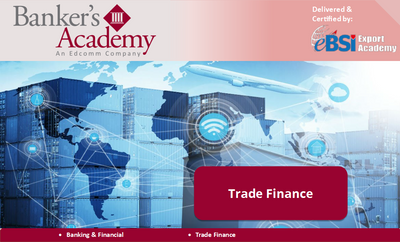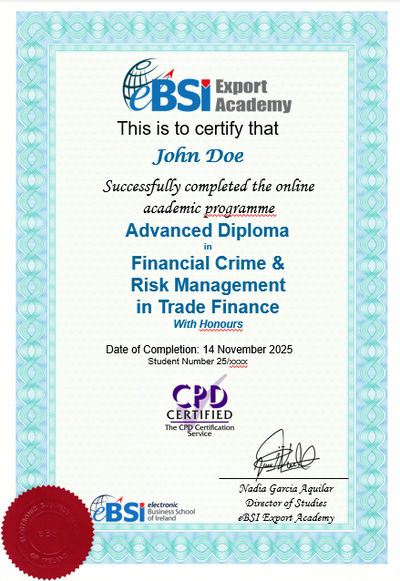Internet Trading and Documentary Credits
– a stumbling block, a challenge or an opportunity?
Serious exporters, large and small offering product to international markets have developed sophisticated straight through export processing systems. Everything from order receipt, credit control, inventory management, freight planning (including carrier’s instructions), right up to the printing of sets of paper export documents or the transmission of export related data records can be automated.
This is not a new development!
EDI (Electronic Data Interchange) has for many years facilitated this process and has in turn propelled further significant technological advances.
EDI and subsequent technologies have indeed greased the exporter’s wheels for export order processing and fulfilment. Unfortunately, however, exporters continually express frustration when the ‘brakes’ are applied to the export process because a Documentary Credit is securing the payment for the export transaction. This frustration is compounded because securing payment is invariably , the most important element involved.
I am not blaming bankers, how could I, I am one; but this is the reality.
Think about it, has bank document processing and settlement time under Documentary Credits accelerated greatly in the past 20 years? There has been some progress. For instance, the issuing and advising process has gained some efficiency, but no major improvement has been achieved in the time taken to examine, remit and effect the final settlement for documents presented.
As stated, no-one is being blamed – but the reality is that the Documentary Credit process which has always been considered burdensome, has by modern benchmarks become inefficient, costly, and to make matters worse in about 60% of cases .the process breaks down in the first instance, that is, on first presentation of documents.
At a banking conference back in 1991 Bernard Wheble, when speaking on technology challenges for trade bankers in respect of transport documents, once again shone with his wisdom and insight when he said “where the source of the problem is an established commercial practice, possibly pre-dating the first invention of the wheel, the solution demands a change in that practice. Certainly, it should not be a re-invention of the wheel, it should merely be supplying it with new and better tyres“.
The core value proposition of a Documentary Credit, that is, the definite undertaking of a bank provided stipulated documents are presented containing data which evidences certain facts or actions remains fully valid today.
The exporter has obviously greased his export wheels, maybe all the Documentary Credit needs is to be fitted with ‘new and better tyres’ as Bernard Wheble suggested back in 1991.
The advent of the Internet, on-line markets with all the in-built speed and efficiency in marketing, communications, logistics control will provide the ultimate challenge but also an opportunity to the Documentary Credit. The Documentary Credit can and will rise to this challenge, because it must.
Trading today, either on the Internet or off-line, requires the exporter to anticipate the demand for their product with pin-point accuracy. Stock levels must be constantly monitored to ensure that there is always enough product to ship. The exporter must know the latest shipment date and exactly how long shipment will take. The exporter is demanding the capability to track their product as it moves though the supply chain from place of dispatch to place of final destination. This is easily achieved through web enabled technology.
So, what needs to be done to fit new and better tyres to the Documentary Credit?
First, the rules that apply to the presentation of documents, electronic, paper or both need to be in place. On this front the ICC is moving fast. An ICC working group led by Dan Taylor and Rene Muller has already released with electrifying speed and efficiency the “UCP Supplement for Electronic Presentation” or eUCP to ICC national committees. The final version of ‘eUCP’ was approved at the ICC Banking Commission meeting in Frankfurt in November 2001 and came into force on 1 April 2002. Copies of eUCP can be obtained from your local chamber of commerce.
Second, integrated straight through document checking and processing systems must be implemented, which will seamlessly process export documents or electronic data records issued by all parties in the Documentary Credit chain, examine them for compliance and effect final settlement. This is a technology challenge, not a reinvention of the wheel. It is an evolution from the paper environment, through possibly a mixed paper-electronic environment to an eventual end-to-end electronic documentary credit presentation process.
Third, the essential ingredients for secure international trading and in particular ‘on-line’ trading are ”Trust’ and ‘Faith’. The integrity of the Documentary Credit which constitutes a definite bank undertaking of payment must be reinforced at every opportunity. For exporters to agree to the use of a Documentary Credits as a mainstream business to business payment instrument in the electronic world, exporters must trust the party issuing the Credit, but more importantly the exporter who is the ultimate beneficiary, must have faith in the Documentary Credit process itself.
Our faith is moulded by our experiences and learning.
The Documentary Credit as we know it, is today facing its greatest challenge. The Documentary Credit can and will rise to this challenge.
As closing remarks to his conference presentation back in 1991, Bernard Wheble proclaimed “So perhaps, rather than seeing legal obstacles to technology as a ‘stumbling block’, we bankers may see them as a ‘challenge’ … and like every self-respecting Irishman, join in the fight“
I guess, being an Irishman makes joining in the fight, the natural thing to do!
Vincent O’Brien






